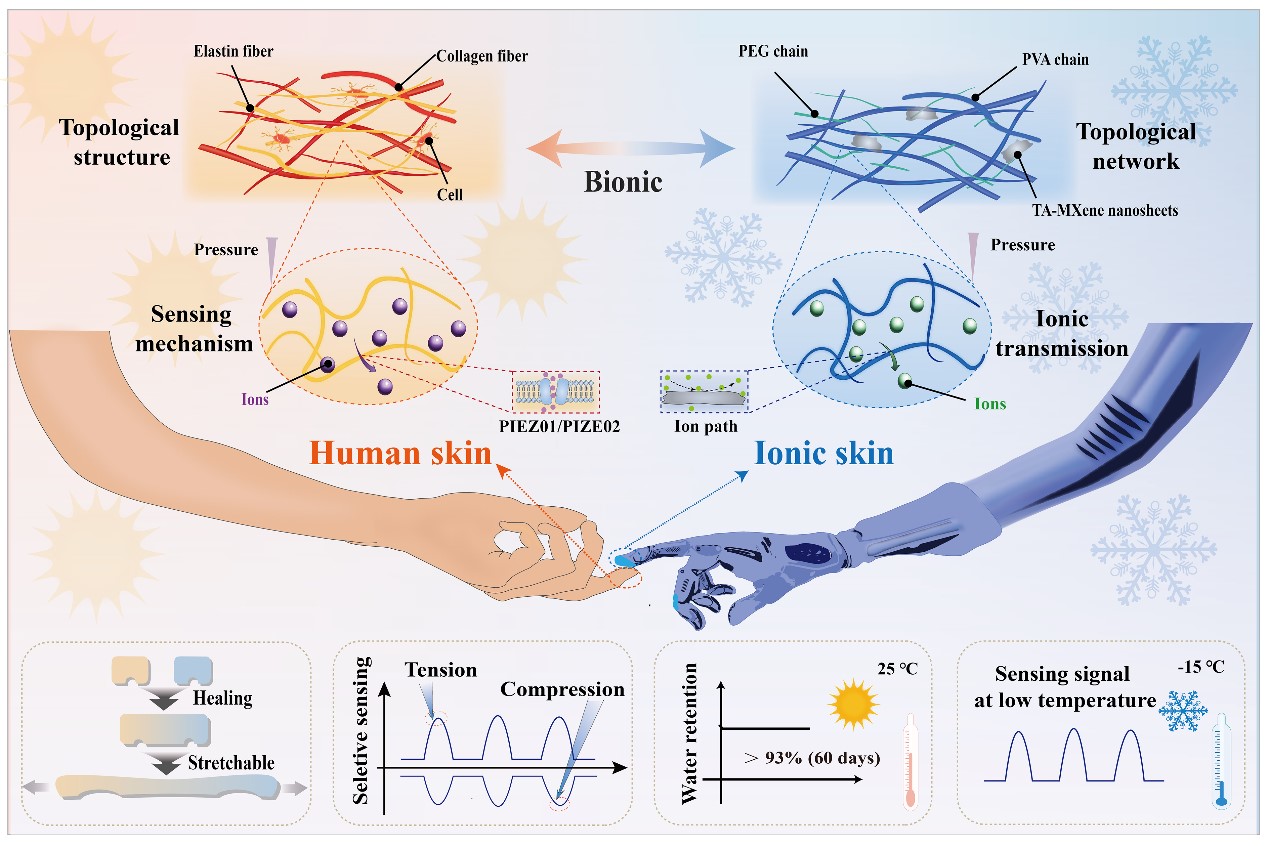新闻动态

- 地址: 江苏省苏州市苏州工业园区若水路398号
- 邮箱: tzhang2009@sinano.ac.cn
- 电话: 86-512-62872706
- 传真: 0512-62603079
- 网址: http://nanosensor.sinano.ac.cn

祝贺课题组硕士生元参、项目研究员李铁论文“A Multifunctional and Selective Ionic Flexible Sensor with Highly Environmental Suitability for Tactile Perception”发表于Advanced Functional Materials期刊
A Multifunctional and Selective Ionic Flexible Sensor with High Environmental Suitability for Tactile Perception
Shen Yuan, Ju Bai, Shengzhao Li, Nan Ma, Shihao Deng, Hao Zhu, Tie Li* and Ting Zhang*
Abstract
Inspired by the tactile sensory mechanism of human skin, ionic hydrogels-derived ionic flexible sensors have attracted much attention since they can produce output signals that match the recognition mode of nerves, showing a potential application in the human-machine interaction. Unfortunately, the practical sensing properties of ionic hydrogels are restricted by the drawbacks of hydroelastic instability and non-selective response ability, such as poor mechanical strength, irretentive solvent retaining capacity, and low temperature intolerance. Herein, in this study, a novel physical-crosslink enhanced ionic hydrogel-PVA/PEG/TA-MXene-Na+/Li+ (PPM-NL) nanocomposite was prepared and shows well comprehensive properties of mechanical strength (400% elongation at break, 0.93 MPa), electrical conductivity (8.1 S/m), tear resistance, self-healing and anti-freezing/drying features (93% water retention after sixty days and frost resistance -27 oC). And the PPM-NL hydrogel-derived flexible sensor displays selective response behavior to tensile and compressive deformation with high sensitivity (G = 1.12) and rapid response time (only 60 ms). Furtherly, this ionic flexible device was applied to monitor the joints motions of humanoid hand and integrated into manipulators to recognize the thickness and softness of objects, showing superior environmental stability. It can be believed that this ionic flexible sensor will provide inspiration for developing next-generation biomimetic tactile perception of robots.

URL: Article DOI: 10.1002/adfm.202309626




